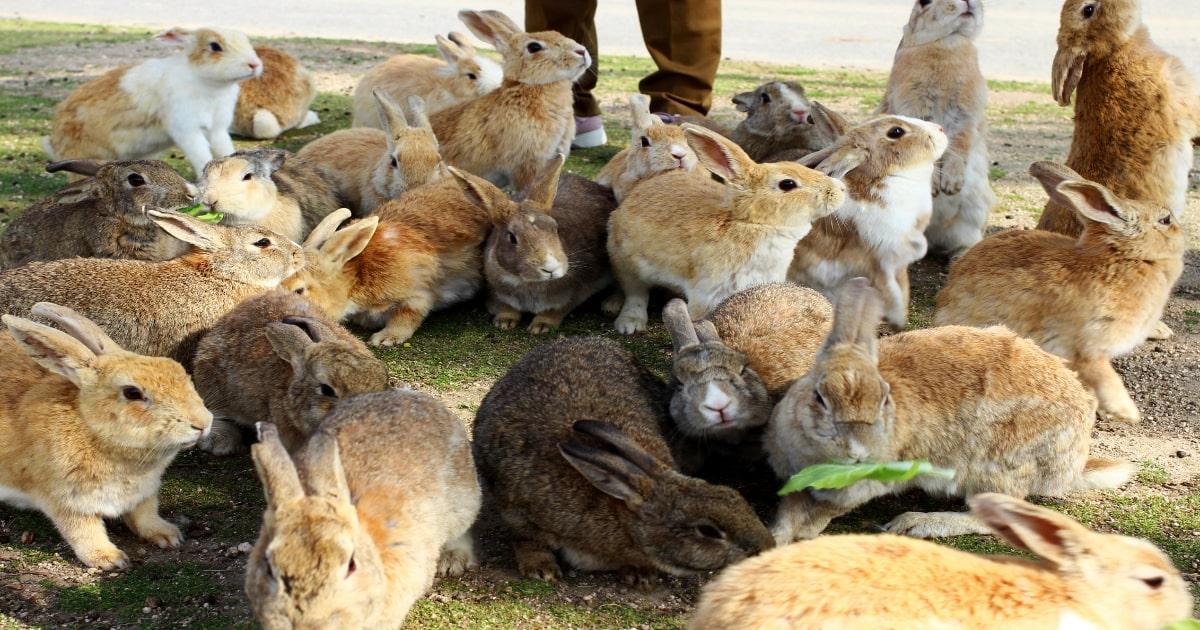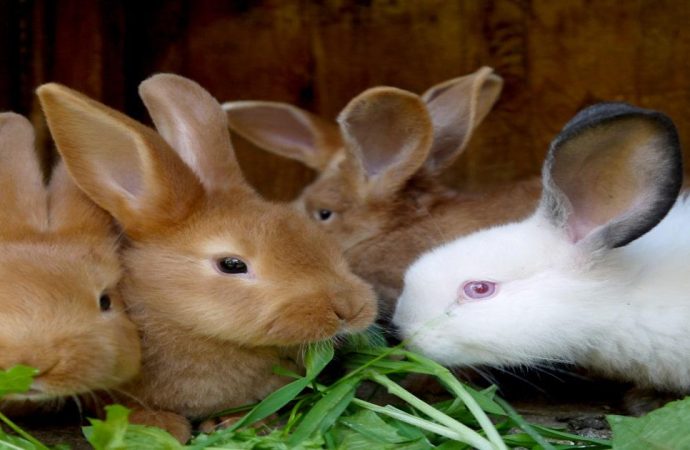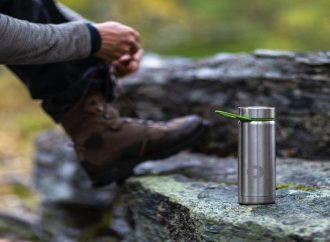Rabbits are a common household pet in the UK, and so in a survival setting it is likely they will become a source of food rather than having to spend time and energy hunting or trapping them in the wild. You can ensure you’re equipped for this by finding out about keeping the best breeds
Rabbits are a common household pet in the UK, and so in a survival setting it is likely they will become a source of food rather than having to spend time and energy hunting or trapping them in the wild.
You can ensure you’re equipped for this by finding out about keeping the best breeds of rabbits for preppers, specially designed for eating rather than just being cute and fluffy, and well as tips for eating them and what to avoid eating.
10 Reasons Preppers Should Consider Keeping Rabbits
1. Not Much Space Needed
Unlike cows and sheep, or even ducks, some of the best rabbit breeds for preppers don’t need a huge amount of space to stay happy and healthy.
They can be kept in cages the majority of the day which can also be stacked to make the most of space, or a large hutch can house many in different compartments depending on the setup.
They can then be let out into a larger run space to get some exercise, a few at a time and eat some fresh grass. You can then switch the area so they cut down different parts of your garden.
2. Rabbits Are Fast Breeders
If you’re looking for an animal to eat for survival, you can’t go wrong with one of the many rabbit breeds for preppers when SHTF, which will replenish their stock very quickly, giving you a steady and ongoing supply of protein. Rabbits will have anywhere from one to twelve young, but the average is around five to nine.
Rabbits will have their young only one month after breeding, which you can eat after only waiting until they are around 2-3 months old depending on the breed. If you have multiple rabbits and breed them a few times a year, you won’t go hungry.
For example, if you have just 5 female rabbits (does), breeding each one two to five times per year, you can expect anywhere from 50 to 175 baby rabbits (kits) per year, depending on the average number per litter.
That is approximately 400lbs – 1400lbs of meat, more than enough to feed a large family.
3. Not Just Good For Meat
Whilst lots of rabbits with a high breed rate and turnover will provide pounds and pounds of meat, the fur of a rabbit is always a prized possession.
When cut correctly, rabbit pelts can be stretched and dried out after cleaning them and can be a source of material for clothing and blankets when sewn together.
You can also scatter rabbit pellets on your garden as an excellent natural and organic fertilizer to help your survival garden get much needed nutrients.
4. Rabbit Meat Is Healthy & Tasty
So long as you eat a balanced diet along with the rabbit you are eating, they are an excellent source of protein and do not contain much fat at all.
Different breeds will of course have different levels of protein and different tastes, but it’s an excellent kind of meat that can be fried, boiled or roasted, taking on a wide variety of flavour profiles.
In a survival situation, all you’ll need is some dry rub to completely transform the rabbit meat into an excellent meal.
5. Don’t Make Much Noise
Unlike a clucking chicken or cockerel, a rabbit is the perfect stealth food for preppers as it does not make much noise, if any. Males may thump at times, but there is no excessive noise if you’re trying to hunker down and not let on that you have this rich protein source.
They can be easily hidden too if your property gets raided. The perfect survival animal for meat especially if you are likely to be heard with people around you.
6. Don’t Need Much Food
Compared to other animals which require huge amounts of food, a rabbit will put on a full pound if given just four pounds of feed or grass. This means they are much more economical and will eat just about any kind of fruit, vegetable, leaves and grass.
You can simply place it on the grass for a few hours per day and it will be more than content chomping away. Rotate its outdoor cage and let the grass grow back, then it’s good to go again.
7. Good Company
When all hell is breaking loose in the world, it’s nice to have something soft and fluffy to play with and cuddle. The best rabbit breeds for preppers are domesticated to some extent, and will engage with humans and be a source of entertainment.
This is especially true for children who might be feeling the strain of things not being quite right with the world, and gives them something warm and fuzzy to connect with.
8. Portability Bonus
In case of an emergency which requires you to bug out, you can pick your rabbits up and put them in your car and drive away with them and their cages in a matter of minutes.
You can then set them up in the new location with relatively little fuss or stress. This ensures that your meat and fur supply will always be there for you whether you are bugging in or out.
9. Cohabitation Potential
If you don’t have much space, then you can keep rabbits with a number of other animals. Whether it’s sheep, chicken, dogs, or goats, rabbits are docile animals most of the time and can be kept in the same communal area as other animals.
Chickens and rabbits are especially good together, and require the same amount of attention and space.
10. Cheap & Cheerful
Starting to keep rabbits for survival is fairly cheap compared to some other animals you could use for food.
You can buy a rabbit for as little as £10 from most breeders, and the hutch set up can be as fancy as you like, or just basic set up for 3 or 4 rabbits will set you back around £100.
Food isn’t too expensive, especially if you buy it in bulk and let them eat grass too, and they just need some straw or wood shavings lining their cage or hutch.
Best Rabbit Breeds For Preppers In The UK

The best rabbit breeds for preppers which you should think about getting for survival, to breed and eat them, are:
- New Zealand White
- Altex
- Champagne D’Argent
- Silver Fox
- Cinnamon
- American Chinchilla
- Palomino
- Rex
- Satin
- Californian
Further to this, the UK is home to wild rabbits too, as well as different breeds of hares. These include the brown hare, the mountain hare, and the Irish hare.
It may be possible to catch a few and hope that they breed, but going from wild to captive is likely to be stressful and you can’t expect them to breed and raise young to a good standard under such circumstances.
Breeding The Rabbits
The process of breeding rabbits is simple, yet there can be issues that have a negative impact on it.
Let’s look at the process of breeding first, and then at some reasons why your rabbits are not producing offspring.
The best way to breed rabbits is to introduce a female rabbit to a male rabbit’s cage.
This is always advisable as if you do it the other way around (introduce a male to a female’s cage) then the female rabbit is likely to attack as they are very territorial.
At first, the two rabbits will run around for a bit. Then, and only if the female is open to breeding, she will lift her tail, allowing the male to mount her. He will then drop to the side.
It is worth letting them do this a few times before returning the female back to her cage.
After this, the female should be returned to the cage around 10 hours or so later as this can help her to ovulate, which in turn makes fertilisation more likely.
If when you bring the female to the male’s cage initially and she does not settle, feel free to try again the next day. However, this may not work, even after several days of trying, so it’s worth looking at other factors.
Even the best breeds of rabbits for preppers are unlikely to breed for several reasons such as:
- Being overweight – get a diet started and try later
- They’re too hot – unlikely to be a problem with the English climate, yet this may change in a survival environment
- Too dark – they’re sensitive to light so try adding light if it’s dark outside
- It’s their first time – young rabbits find it tricky as they don’t know what they’re doing, but it’s worth trying again when they are older
- Too long between litters – more likely to produce more litters if the gap between is small
Birth To Food – Fryers
Depending on the breed, rabbits are quick to grow to a size in which they are worth eating. The most common type of domestic rabbit meat comes from rabbits known as ‘fryers’.
These are usually less than 10 weeks old and weigh between 3.5 and 5.5 pounds when alive. The carcass typically weighs more than half of this and includes the liver, heart, and kidneys.
These are popular among preppers as they are quick to rear, but also provide a supply of tender meat.
Safety Tips When Eating Rabbits
Generally, rabbits are safe to eat. The only concern you should have is if the animal is carrying any diseases, such as Tularaemia which causes white spots on the liver.
If the rabbit is carrying this, then you can contract it when you touch any tissue or blood from the animal. So, if the rabbit seems unhealthy, avoid eating it. Also look for things like ticks and fleas, and if these are present avoid eating as they could have blood-borne diseases.
If you do go ahead, ensure you wear latex gloves when gutting it as this will help reduce contamination. However, if you find the liver has white lesions on it during this inspection, avoid eating the rabbit as it is unhealthy.
To help keep the meat safe, ensure you cook it at 160 degrees Fahrenheit to get rid of pathogens that can cause harm. It also recommended to avoid eating rabbits in the summer as this is when they are likely to have and spread worms.
Based on these points, generally wild rabbits are more likely to have these problems, so it is advisable to not eat them, unless you know what you are looking for.
Keeping Rabbits

If you are seriously looking for the best breeds of rabbit for preppers in the UK, it is worth considering what they require to be healthy to ensure you have a good supply of meat in a survival setting. The main features include:
Resting area – this should be big enough for the rabbit to lie down and stand on their back legs
Exercise area – plenty of space for them to hop and run (at least 3 x 6 x 8ft)
When planning a resting area, it is important to ensure that it is:
- draught-free and waterproof
- sheltered away from direct sunlight and strong wind
- raised off the ground to keep it dry
- safe from predators
Other things to consider when keeping rabbits are:
- Food – a mixture of vegetables and fibre-rich pellets (around a quarter of a cup per day)
- Water – a fresh supply daily
- Enrichment – they get bored easily so keeping them healthy in body and mind requires toys to play with
- Hygiene – they need a clean environment to keep them healthy and encourage breeding
What Is Rabbit Starvation?
Although most of the rabbit is edible, there are parts to avoid eating. This includes the head, the guts and the green coloured gland which is embedded in the liver.
The liver and kidneys are edible but can be quite gamey so will depend on your tastes.
Whilst you can survive on the protein from rabbits, rabbit starvation is a form of protein poisoning and occurs when someone consumes too much protein and not enough fats, carbohydrates or micronutrients.
This is common in those who have a diet of solely rabbit (or similar small game) so it is important for all preppers to ensure they have a balanced diet in order to prevent this from happening. If left untreated, it can cause a fatal accumulation of toxins in the blood.
Summary
To sum up, the best breeds of rabbit for preppers are ones that, with the right food supply and environment, can breed quickly to supply you with a good source of virtually endless protein if done right.
However, your safety comes first, so make sure you know what to look out for when eating rabbit to ensure you continue to survive.





















